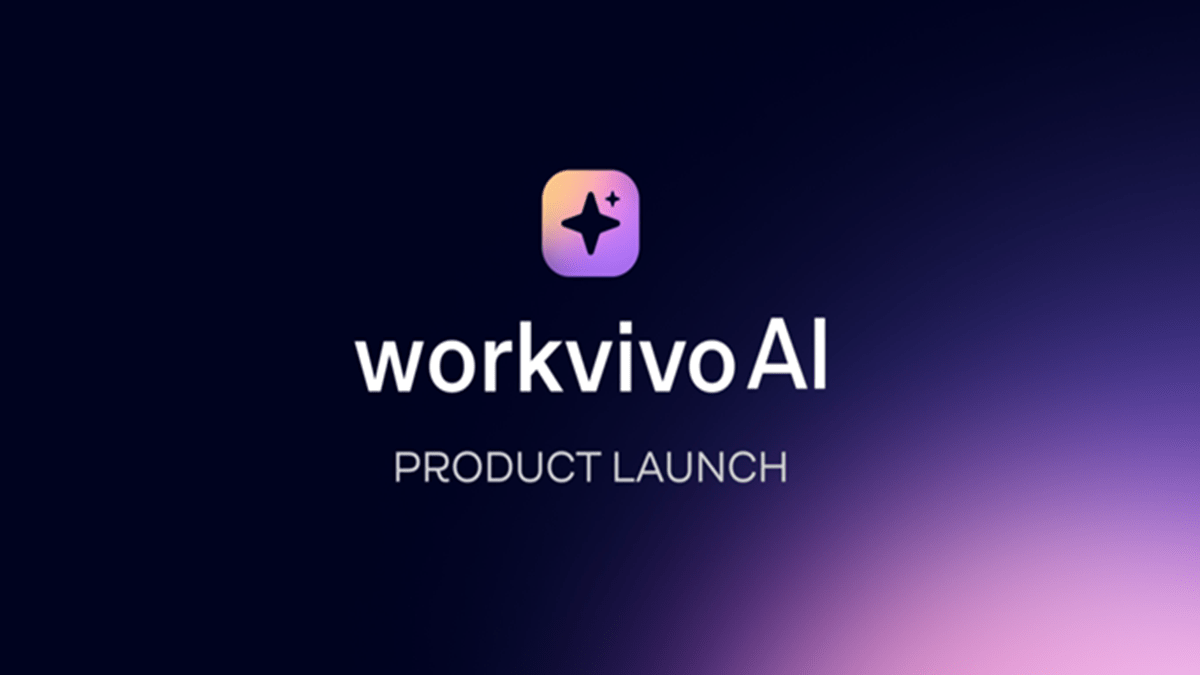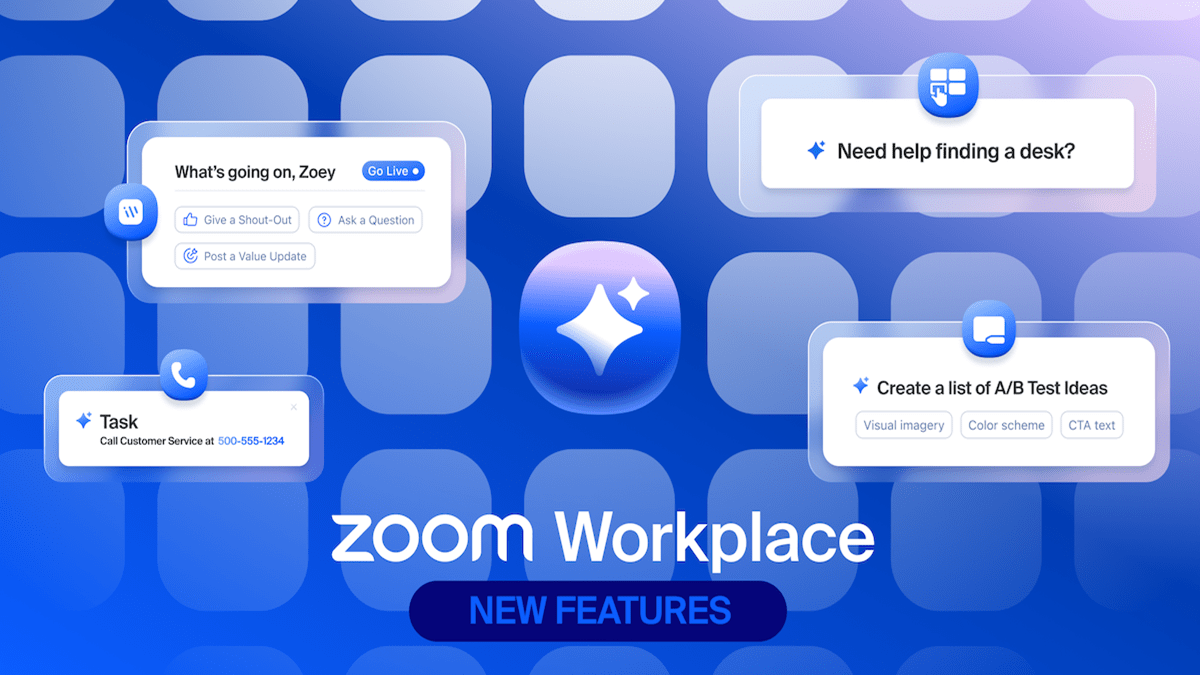Q2 Earnings Meet Zoom Perspectives 2025:What July’s Strategy Looks Like in the Numbers
Zoom released its Q2 FY2026 financial results, offering a clearer view of how the company’s big-picture strategy is unfolding. Much of that strategy was first laid out in July, when I joined fellow analysts at Zoom Perspectives, the company’s annual event designed to showcase its vision for the future of work.
The latest numbers reflect the momentum behind that vision. Revenue grew modestly but steadily, with enterprise and international sales leading the way. Workvivo adoption is accelerating, and Zoom’s AI Companion continues to gain traction across the product portfolio.
Taken together, these results provide an opportunity to revisit three themes that stood out to me at Perspectives: the reset of Zoom’s channel strategy, the role of Workvivo in employee engagement, and Eric Yuan’s vision of an AI-first work platform. The earnings show these initiatives are not just forward-looking; they are already influencing outcomes.
What the Numbers Show
Zoom’s Q2 performance underscores the transition already underway. Enterprise revenue outpaced online sales, confirming that Zoom’s growth is anchored in larger, more complex accounts. International markets like EMEA and APAC delivered double-digit gains, evidence that investments outside North America are starting to pay off. Profitability also improved, with operating margins climbing year over year.
Product adoption was equally important. Workvivo added customers at a double-digit rate, reinforcing its role in expanding enterprise relationships. The AI Companion continued to see steady usage growth across meetings, phone, and chat—evidence that AI is moving from a bolt-on feature to an integral part of the daily workflow.
These signals provide the backdrop for the three themes I took away from Perspectives 2025. Let’s explore those ideas below.
Channel Strategy: Building Scale Through Partners

At Perspectives, Nick Tidd emphasized his mandate to re-energize Zoom’s global channel. The results today show why that work is so critical. Enterprise revenue once again outpaced online revenue, demonstrating that Zoom’s future lies in winning large, complex deals. International markets like EMEA and APAC posted double-digit growth, which underscores the importance of partners who can execute locally.
Profitability also improved, with operating margins moving higher year over year. This ties directly to Nick’s commitment to creating healthier economics for partners by simplifying quote-to-cash processes and making margins more predictable. Channel alignment is not just about top-line growth; it is about ensuring that Zoom and its partners can sustain that growth profitably.
For a company competing against entrenched players like Microsoft and Cisco, this shift matters. The channel is Zoom’s lever to reach new geographies, scale international operations, and deepen enterprise penetration. The Q2 results suggest that progress is being made.
Employee Engagement: Workvivo’s Expanding Role

Employee engagement was one of the surprise stars of Perspectives. In my conversation with Joe Darrer, it became clear that Workvivo is not an adjacent product, but a core part of Zoom’s evolving platform. The Q2 earnings confirmed this trajectory, with Workvivo adding customers at a double-digit rate and contributing meaningfully to enterprise expansions.
What is important here is how Workvivo connects the dots between communication and culture. Zoom meetings and chat keep people connected in real time, but Workvivo provides a digital community where employees share wins, access resources, and feel part of something larger. That is increasingly critical for hybrid and frontline workforces.
The fact that Zoom is calling out Workvivo in its results shows that it is resonating with customers and impacting deal sizes. For CIOs and CHROs, this represents an opportunity to address not just productivity but retention and engagement. For Zoom, it broadens the company’s value proposition beyond communications and into the employee experience category.
Eric Yuan’s Vision: The AI-First Work Platform

The third theme is Zoom’s push to become an AI-first work platform. Eric Yuan’s keynote at Perspectives framed this as more than a set of features. His vision is of natural language as the interface for work, with an AI assistant proactively managing scheduling, communication, and tasks.
The Q2 earnings provided some validation. Usage of Zoom’s AI Companion continues to grow, with customers embracing its ability to summarize meetings, draft messages, and provide contextual insights across the platform. Importantly, Zoom’s commentary highlighted that AI is not a bolt-on. It is woven into meetings, phone, chat, and even Workvivo.
That integration is what differentiates Zoom. Competitors are racing to release AI capabilities, but many are fragmented or tied to specific workloads. Zoom’s opportunity is to unify them into a single platform experience. The execution challenge remains high, but the momentum seen in Q2 suggests the vision is gaining traction.
Strategy and Performance Converge
What stands out in reviewing both Perspectives and today’s earnings is how tightly the strategy aligns with performance. Channel expansion explains international and enterprise growth. Workvivo adoption reflects demand for deeper employee engagement. And AI Companion usage demonstrates the early stages of an AI-first platform taking shape.
The market will continue to measure Zoom by its ability to execute consistently across these three fronts. Can it modernize the partner ecosystem fast enough to scale globally? Will Workvivo sustain its growth trajectory and integrate deeply into enterprise workflows? And can the AI vision deliver a seamless experience that feels less like automation and more like a trusted digital partner?
The answers will determine whether Zoom evolves into a lasting enterprise platform. For now, both the strategy and the numbers suggest that the company is moving in the right direction.



